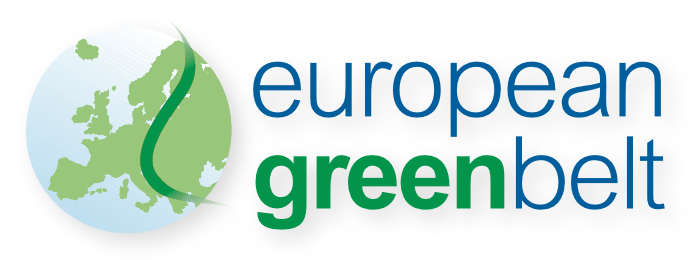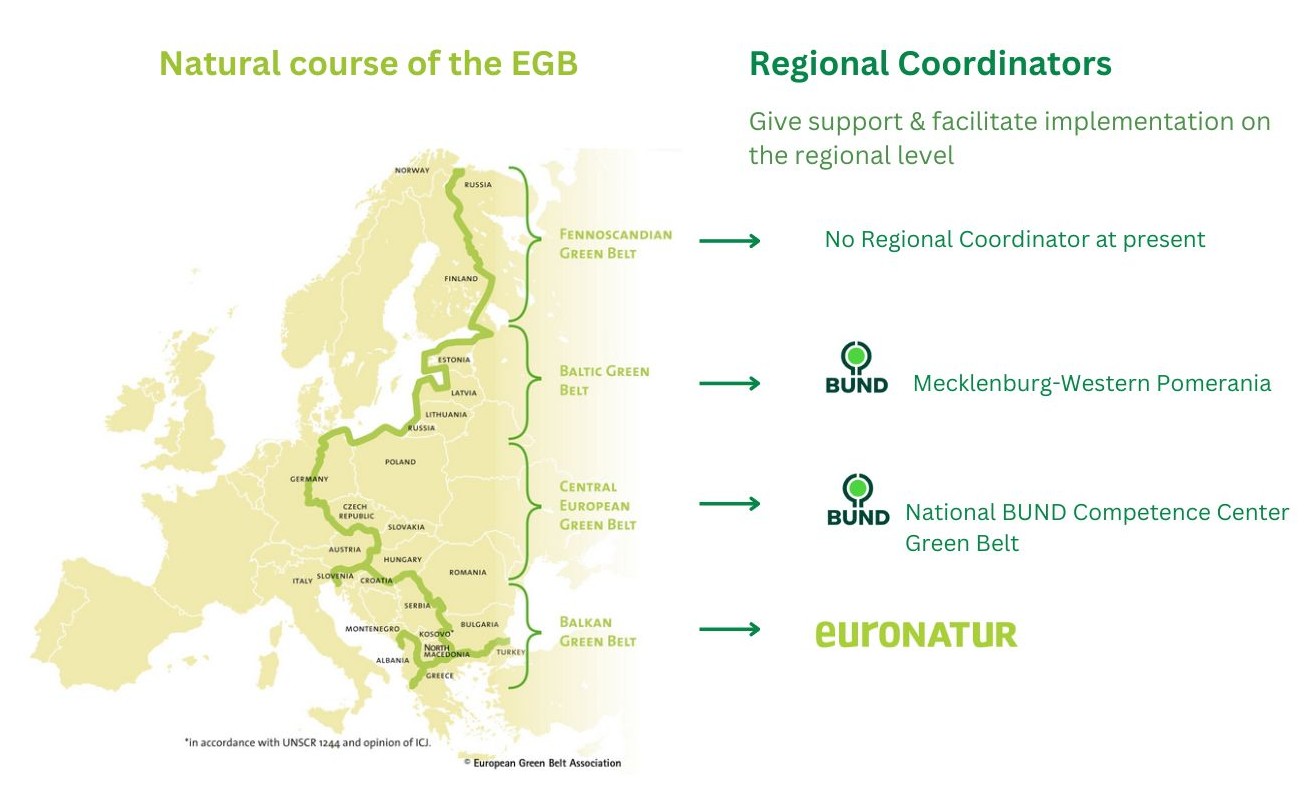Structure
Four regions of the European Green Belt
The European Green Belt Initiative is organized in four sections – Fennoscandia, Baltic, Central Europea and Balkan – in order to reflect and highlight regional diversity. Each section is coordinated by a Regional Coordinator. In addition, each country designated National Focal Points that help promote and support the idea of the European Green Belt on the national level.
Role of the Regional Coordinators:
- Support and facilitate the implementation of the work programme in close cooperation with all National Focal Points and National NGO partners,
- Organise, conduct and chair regional meetings
- Prepare reports on activities and developments
- Ensure regular communication with other stakeholders
- Keep records of relevant activities
- Stimulate and initiate concrete projects
- Support national stakeholders in promoting the European Green Belt, and
- Lobbying at different levels.
Bridging Cultures and Disciplines
The European Green Belt Initiative was officially named during a joint conference in 2003 and emerged from numerous regional efforts along the former East-West border of Europe. A broad, multi-stakeholder initiative, it brings together a wide range of stakeholders from different disciplines across Europe who work together to protect nature along the European Green Belt. These stakeholders include national and international NGOs, government bodies, protected area authorities, Regional Coordinators and National Focal Points. Through cross-border and cross-sectoral partnerships, the initiative promotes sustainable regional development and highlights the importance of nature conservation.
Transboundary Cooperation
The European Green Belt connects 16 EU countries, 5 candidate countries (Albania, Serbia, Montenegro, North Macedonia, Turkey), 1 potential candidate country (Kosovo (in accordance with UNSCR 1244 and opinion of ICJ)) and 2 non-EU countries (Russia and Norway). The initiative is an excellent geopolitical, ecopolitical and cultural opportunity for the EU that establishes a framework for cross-border and cross-sector partnerships for nature conservation and sustainable regional development. In that sense, the Initiative is a potential for historical documentation and study of the Cold War, as well as the integration of old and new EU Member States, candidate countries, potential EU candidates and non-EU countries.
The extraordinary combination of nature, culture and history as unique feature and competitive advantage in the structurally weak areas along the European Green Belt, can offer potential for green jobs and sustainable development.
Governance
Advancing the European Green Belt
From 2011 until 2014 the Regional Coordinators for the Central European Green Belt (BUND) and the Balkan Green Belt (EuroNatur) implemented the project “Advancing the European Green Belt Initiative” supported by the German Federal Agency for Nature Conservation with funds from the German Environmental Ministry. Focus of the project was the long-term coordination, financing and communication of activities and stakeholders in the 24 countries along the European Green Belt.
As part of the project a Coordination Group was established in 2012 in order to take over the overall steering of the European Green Belt Initiative. The Coordination Group brought together different representatives from all regions in order to follow a participative approach and to reflect the diversity of the European Green Belt:
- 4 Regional Coordinators (Fennoscandia, Baltic Region, Central Europe, Balkan)
- 4 National Focal Points (one representing each region)
- 4 Non-Governmental Organizations (NGOs) (one from each region)
- IUCN, International Union for Conservation of Nature
The tasks of the Coordination Group are specified in Terms of Reference and comprise amongst others:
- to plan and organize the Pan-European meetings
- to keep a record of relevant activities along the entire Green Belt
- to inform all interested parties about new developments
- to develop and implement a joint communication strategy
- to develop a sustainable financing scheme for the coordination group
- to raise the profile of the initiative
- to develop a branding strategy
The Coordination Group was chaired by EuroNatur, Regional Coordinator Balkan Green Belt.
Since the beginnings of the European Green Belt Initiative in 2003 the continuity of work for and activities within the initiative was not always given due to its entire dependence on project funding. In order to secure the long-term existence of the initiative during the 6th Pan-European Green Belt Conference in Mavrovo in June 2012 the participants concluded that options to establish a formal organization need to be explored.
Based on the mandate given in Mavrovo the Coordination Group explored different opportunities for an organizational model. Various organizational models have been developed in detail and their pros and cons have been assessed by an external consultant. The results of this process have been presented during the 7th Pan-European Green Belt Conference in Berlin in May 2013.
Establishment of a legitimated and mandated body to coordinate the European Green Belt Initiative
After a thorough consultation process within the Coordination Group as well as with the active partner organizations at the European Green Belt an association has been identified as most appropriate organizational model for the European Green Belt. It is a member-driven organization and thus reflects best the principle of democratic participation that characterizes the collaboration along the European Green Belt.
During the 8th Pan-European Green Belt Conference in Slavonice, Czech Republic, in September 2014 the European Green Belt Association e.V. was founded, which is now responsible for the governance of the European Green Belt Initiative. The well-proven structure of the Coordination Group was transferred as far as possible into the Board of the European Green Belt Association.

